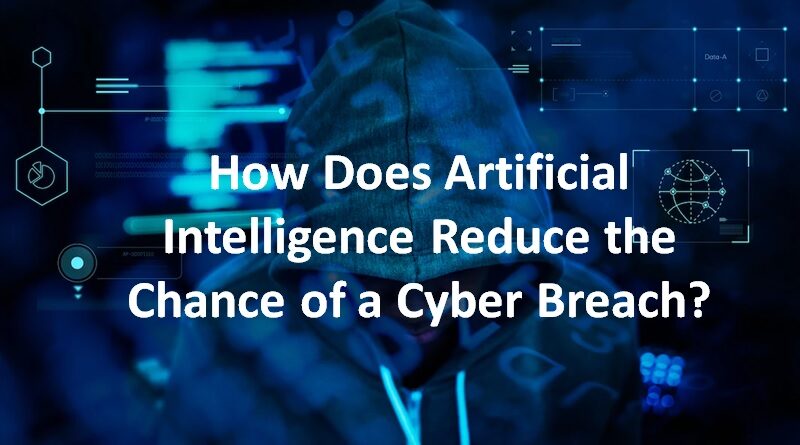How Does Artificial Intelligence Reduce the Chance of a Cyber Breach?
Artificial intelligence makes CEOs and security analysts happy in the field of cybersecurity. One benefit of automation is that less money needs to be set aside for cyber security. Additionally, it greatly improves the accuracy and effectiveness of the job analysts do when identifying and addressing cyber threats.
Artificial intelligence is becoming more than just useful; it’s crucial. Statista reports that 83% of surveyed US businesses concur that they “would not be able to respond to cyberattacks without AI.”
The act of scoping the exposure, identifying key risks, and reducing threats or finding faults early on is one area in which AI has been extensively deployed and essential for security.
Here, we examine AI-powered threat exposure management in more detail to demonstrate how it makes use of artificial intelligence to fix and avoid issues.
Five Steps to Always Repetition
Artificial intelligence enables the repeating (automation) of crucial security-enhancing processes. These steps are continuously taken in relation to threat exposure management:
- mapping of the internal and external attack surfaces, including all internal and external software and compromised business data.
- Identifying the assets that are exposed involves searching the infrastructure for any potential configuration problems and other vulnerabilities that could let a hacker into the network.
- Prioritizing the most serious risks, such as ransomware, successful phishing, or data breaches, which are the problems most likely to result in significant occurrences.
- Testing the protective technology and personnel with simulated attacks to determine whether they are prepared for prospective hacking attempts is the evaluation of security tools.
- Taking action to address the business’s weak points in its cyber defences by leveraging the data to strengthen security
For thorough management, it is crucial to automatically repeat the cycle of identifying the problems particular to a certain organization, testing the various security levels and those engaged, and addressing any potential hazards.
Teams can use AI to automate security management processes as necessary for the organisation, including the testing component. This frees up their schedule and allows them to focus on more difficult problems.
Early Identifying of Existing and New Threats
Moving quickly is crucial in cybersecurity in order to improve security and respond to potential issues within the system. Incidents place a significant financial drain on businesses if they are not identified quickly.
The more time the security team takes, the longer hackers have to cause harm to the system undetected. Additionally, the longer it takes for the company to recover from the attack.
By identifying key defects before threat actors do, threat exposure management shortens the time it takes to identify the problem within the system and stops hackers from taking advantage of vulnerabilities.
Thus, the programme assists the teams in lowering the likelihood of a significant cyber attack from both known dangers and zero-day exploits.
The majority of known dangers can be automatically recognized and countered.
What about malevolent behavior for which the business is unprepared, such zero-day attacks?
Cyber analysts can identify early warning indications of sophisticated threats with the aid of a threat exposure management programme. Bypassing security can lead to more advanced hacking, which needs teams to manually mitigate.
Additionally, this technology is linked to the MITRE ATT&CK Framework, which is a tool for security specialists and businesses. The Framework shows all of the most recent hacking techniques that have put other organisations at jeopardy.
It is used by threat exposure management to test the security against new cybercriminal techniques and notify analysts of any vulnerabilities that may already be present.
Critical Risk Prioritization
If security analysts have all the information they need to make wise decisions, they can quickly manage attack surfaces.
For instance, threat exposure management makes use of AI to produce a report of the high-risk threats that might have an impact on the business.
It takes into account a growing list of both recent and historical attacks that may pose a threat to the infrastructure, as well as a map of all the company’s hardware and software.
Teams that are understaffed and overworked must use their time efficiently.
That is, rather than concentrating on minor problems that can wait for another round of schedule-patching, they must identify the defects that are most likely to harm the system and devote their time to resolving them.
Taking a Business’s Context into Account
The same threat might not be a high-risk issue for one organisation while seriously hurting its profits.
It depends on whose resources and which area of the architecture the hacker has affected.
Threat exposure management searches the internet for credentials that have been compromised that hackers could use to access a network without authorization.
Additionally, it takes into account whatever crucial data may be compromised as a result of the cyberattack in the event that illegal activity has been detected within the system.
AI is utilised to make the connections between the software and assets that have been mapped and the newly logged dangers that companies need to be aware of.
Everything depends on the precise business context and the location of the data inside the structure, and this is something that previous AI-based technologies haven’t taken into account before.
The Secret to Management in Security Is AI
Teams lack the time and resources to create reports by hand and track down threats. Given the increased number of threats and the constant advancement of increasingly complex hacking techniques, using AI has become the norm.
Threats are too numerous today, and infrastructure is evolving quickly. Businesses have a fighting chance thanks to artificial intelligence. The management process, which needs to be repeated constantly in order to identify key threats from one minute to the next, is one area of security where this is most obvious.
Artificial intelligence (AI)-based technology, such as threat exposure management, demonstrates the full potential of automation as well as ongoing learning and upgrades with the aim of reducing the likelihood of costly breaches and other hacking incidents.




